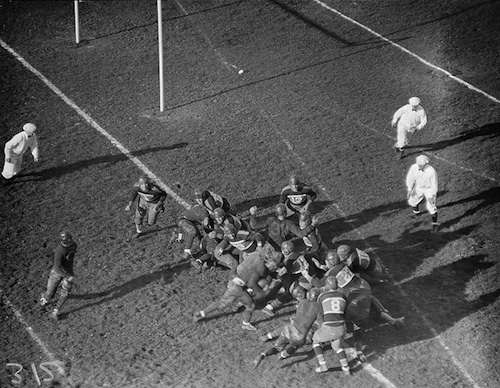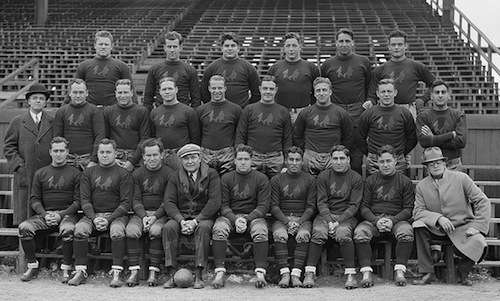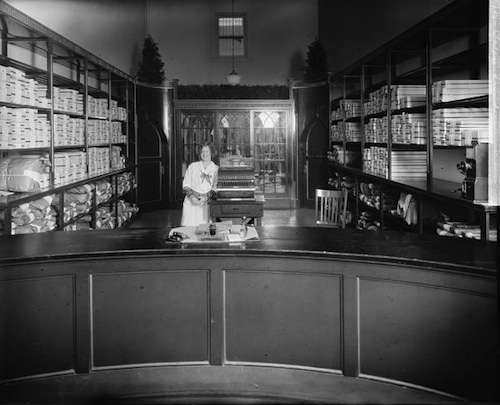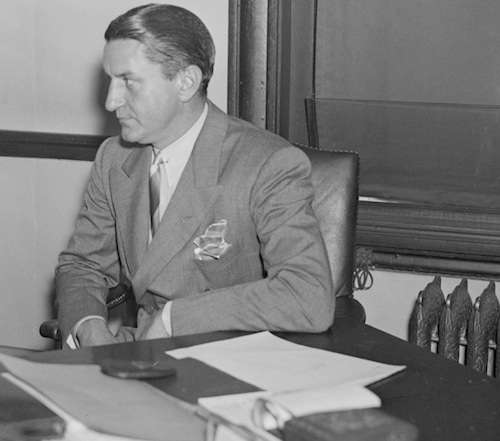George Preston Marshall brought professional football to Boston in 1931 with a team known as the Boston Redskins — and which won a division championship.
Boston didn’t care.
The city’s indifference to his football team infuriated Marshall, who eventually moved the Redskins to Washington, D.C. But not before he issued one final snub to the city that ignored him.
Wet Wash
George Preston Marshall was a large, flamboyant showman who hated to be ignored.
He was born Oct. 11, 1896 in Charleston, W. Va., but grew up in nearby Grafton, where his parents published the local newspaper. His father acquired the Palace Laundry in Washington, D.C., when George was in his teens, and the family moved to the nation’s capital.
He made his debut on the burlesque stage at the age of 16 but found he did better at the business side of entertainment. He took over the laundry business after his father died and built it into a large chain.
Marshall got romantically involved with film actress Louise Brooks during the ‘20s and ‘30s. She called him ‘Wet Wash’ because of the laundries.
George Marshall, Living Large
His first wife was a Ziegfield Follies girl. His second was silent film star Corinne Griffith, known as the ‘Orchid of the Screen.’ She called him ‘The Marshall Without a Plan.’
Marshall wore full-length raccoon coats and lived high. In 1935, the Associated Press reported he lived in a hotel with a valet, and he didn’t drive but had a chauffeur and a car with a back seat that slid into a bunk and a small bar.
Marshall used his profit from the laundry business to get into professional sports. In 1925, he founded a professional basketball team in Washington, D.C., called the Washington Palace Five or the Laundrymen. It folded a few years later.

Lone Star Dietz
He then bought the remains of the failed Newark Tornadoes franchise from the 10-year-old NFL in 1932. He started out with three partners but ended up owning the team by himself. The team was first called the Braves because it shared a stadium with Boston’s National League baseball team. The next year the team moved to Fenway Park and Marshall changed the name to the Redskins after the coach, Lone Star Dietz, who claimed to be Native American but was apparently not.
One advantage to the ‘Redskins’ name: The players could wear the same uniforms they had as ‘Braves.’ The team also had four Native American players: ‘Chief’ Larry Johnson, Louis ‘Rabbit’ Weller, John Orien Crow and David Ward.

Boston Redskins play the New York Giants at Fenway Park, 1933. Photo courtesy Boston Public Library, Leslie Jones Collection.
A Struggle
The Redskins struggled for their first three years in Boston and failed to win much of a following. It was an era when college football was more popular than professional.
Marshall built the Boston Redskins into a winning team by 1936. Still Boston didn’t care. The Boston papers gave more ink to Harvard and Boston College football and to the Red Sox and Braves than to the fledgling professional team. It infuriated him when the Boston Globe devoted more space to the Radcliffe College girls’ field hockey team than to his Boston Redskins.
In 1936, the Boston Redskins won the NFL Eastern Division championship with a 7-5 record. Marshall was angered by the poor attendance in Boston and already announced plans to move the team to Washington. So he gave up home field advantage and took the team to New York’s Polo Grounds to play the Western Division Champion Green Bay Packers on Dec. 13, 1936.
“We don’t owe Boston much after the shabby treatment we’ve received,” said Marshall.
It was only the fourth NFL championship game ever. The Green Bay Packers trounced the Boston Redskins, 21-6.
Marshall would own the team until his death in 1969.
With thanks to Slingin’ Sam, The Life and Times of the Greatest Quarterback Ever to Play the Game by Joe Holley. This story about the Boston Redskins was updated in 2022.




1 comment
[…] request for a franchise in 1959 because five pro teams had already failed in the city. In 1936, the Boston Redskins had won the NFL championship, but the fans were so disinterested owner George Marshall moved the […]
Comments are closed.